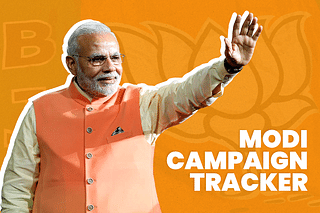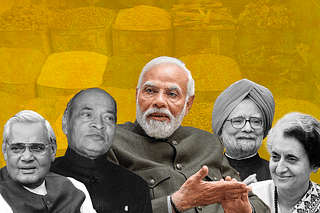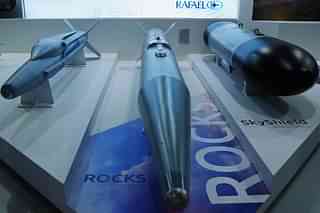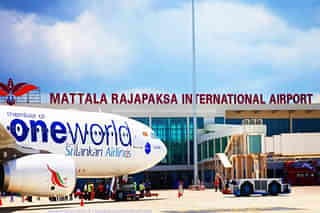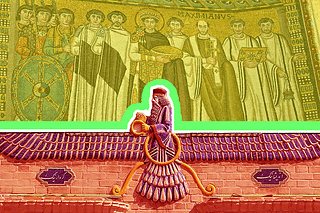Ideas
Going Cashless In Transit: Blurring The Line Between Digital And Physical Approach
Srikanth Ramakrishnan
Nov 10, 2016, 03:21 PM | Updated 03:21 PM IST
Save & read from anywhere!
Bookmark stories for easy access on any device or the Swarajya app.
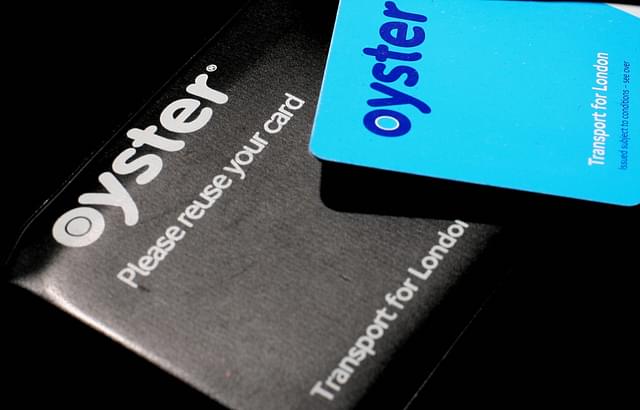
With the National Democratic Alliance (NDA) government’s latest move to demonetise Rs 500 and Rs 1,000 notes in a bid to curb black money, it’s time to rethink some basic actions of our everyday life. It’s 2016 and even local grocers in many cities have taken to using Whatsapp as a platform for customers to order vegetables with them.
However, the one thing that is crucial to all sections of society is transit, transport, or commute - whatever people wish to call them. Therefore, in order to keep up with the times, transport too has to evolve and adapt itself by going cashless.
Cashless transport is not new to India. It has been in existence for quite a while now, and has been moderately successful, at least where it has been implemented properly. State Transport Undertakings (STUs), Indian Railways and airlines have already taken the cash-free route for long distance trips requiring reservation by allowing customers to book tickets online or by using a phone. But, it is the local commute that needs attention.
Before we proceed, let me explain the concept of Manual Fare Collection (MFC) and Automatic Fare Collection (AFC). MFC, as the name suggests, is a system, which is entirely handled by a human. A simple example of MFC is, when you step into a bus and pay the fare, the conductor pulls out a ticket from a wad of tickets or a box, punches it and hands it over. He or she later on has to tally the number of tickets sold with the money in their bag, fill out a trip sheet, which is later verified by a higher authority in the depot. In the case of AFC, the system is automated, with the most common example being swiping a card or token at the turnstiles of a metro station. Of course, an automated system doesn’t necessarily negate the need for human intervention as conductors using Electronic Ticketing Machines (ETMs) can also be classed under AFC.
Now, cashless payments largely fall under the AFC category, although there do exist systems, which are manual in nature. Till recently, Western Railway (WR) and Central Railway (CR) had prepaid coupons of varying denominations sold at stations. Depending on where the commuter wanted to go, they would tear out coupons matching that amount from the booklet, insert it into the Coupon Validating Machine, get it punched and then permit customers to board the train. The system was discontinued because the coupons were not part of the computerised Unreserved Ticketing System (UTS). However, if such a system were to be implemented for buses, it would be a logistical nightmare for conductors and depot administrators.
Based on how it is implemented, there are two ways to explore cashless transit systems, either a digital method, or a physical method.
The Digital Approach
The digital approach is using a prepaid wallet. The user tops up the wallet from a bank account or a card, and uses it to pay for the journey using a mobile phone app. This method is used by cab aggregators Ola and Uber as well as Indian Railways in the UTS app. Of course, while the UTS app does have its fair share of problems, it saves the user from having to stand in the queue and lets them buy a ticket as they walk towards their train. Similarly, using a wallet during a cab ride eliminates problems of small change shortage, allows users to refill wallets while on the move in case one does not have cash. In some cities, auto-rickshaws accept payments via wallets too, by affixing a QR code on their vehicle for the user to scan and then pay.
The Physical Approach
Now, not everyone might have access to a smartphone, or be able to create an online payment wallet. The “urban poor” may be using basic phones. How do these people make use of cashless transit systems? This is where the Radio-Frequency ID (RFID) card, sometimes known as a Smart Card comes into the picture. While mass transit projects such as Metro Rail, Monorail, and Bus Rapid Transport System (BRTS) use Smart Cards for off-board ticketing (where tickets are bought at a station, rather than on the vehicle), very few transport bodies allow cards to be used in the bus. The best known example of this would be the Brihanmumbai Electricity Supply and Transport (BEST) Undertaking. In 2011, BEST went in for a massive digitisation plan on a Public-Private Partnership (PPP) with Trimax IT Limited. As part of the system, the entire punched ticket system was replaced with a centralised server with each conductor being given an ETM. The existing paper-based bus pass system was replaced with RFID cards, which could be bought and renewed online. It was later extended to allow free travel to visually-impaired people. BEST, additionally, introduced an ePurse, a prepaid ID card, which could be topped up to purchase tickets. Along with this, the ePurse also acted as proof of identity for people who wanted to buy daily passes. This system has also been implemented by the Maharashtra, Rajasthan, and Uttar Pradesh state road transport corporations. Similarly, WR and CR too introduced a prepaid smart card for suburban rail travel. All a cardholder would have to do is walk up to a ticket vending machine at a station, insert the card, choose the destination, and print the ticket. However, unlike the swipe-in, swipe-out method at metro stations, these two come under the category of semi-automatic fare collection, since they require a ticket to be printed. Ahmedabad recently went one step ahead by enabling the use of RFID cards to pay autorickshaw fares as well.
While all this may sound nice and rosy, the problem occurs when one has to make use of multiple modes of transport. Anyone in Mumbai would require four smart cards for cashless transit: One each for BEST, the suburban rail, the metro and the monorail. But, there is hope for that to change. The Government of India launched the ‘More Card’ with much fanfare in 2012, but it didn’t take off. Initially valid only on the Delhi Metro and one route on its feeder buses, the card was meant to act as a common mobility platform for buses, trains, taxis, parking and ferries. It died a natural death till 2015 when the Ministry of Urban Affairs came up with another proposal to bring out a pan-India common mobility payment card.
The Roads and Transport Authority of Dubai, which issues RFID Nol Cards for public transport introduced a SmartNol service, which is essentially an RFID-enabled SIM card issued by Etisalat or du in a phone that is Near Field Communication (NFC)-enabled so that commuters need not carry an additional card. This essentially blurs the lines between the digital and physical approach to cashless transit.
Similarly, in 2014, the National Highways Authority of India launched FASTag - India’s version of the E-ZPass. It was a single RFID sticker affixed to the windshield of a vehicle which would enable it to drive through a toll plaza with the toll amount deducted from a prepaid account linked to the RFID tag. While it is yet to be implemented across all national highways, it is already operational on roads built by state agencies like the Maharashtra State Road Development Corporation (MSRDC).
Now, when there are so many payment methods available across the country, both online by using phones and offline by using cards, why are we still using cash?
Cashless transit options have a lot of benefits over cash-based alternatives, for both the service providers as well as the commuters.
Going cashless has benefits aplenty for the service provider:
· It reduces the workload for the conductors and staff, resulting in higher employee productivity.
· It gives the administration real time data, which can be used for optimal route planning.
· It reduces pilferages and losses on account of the staff. Bengaluru’s bus conductors are notorious for taking money lesser than the fare, not issuing tickets and pocketing the cash.
The Commuters Have Similar Benefits:
· It makes travel easier. You can either choose to pay at one shot without worrying about hunting for money in your pocket.
· It eliminates losses due to lack of change. Often conductors don’t return the change, and in the end, pocket the money.
· It reduces the chance of fake currency floating around. Last month, the social media had a laugh riot because an autorickshaw driver gave an actress a fake 100 rupee note signed by Santa Claus.
In a way, the move by the government to demonetise higher value notes is welcome. It creates a healthy environment for people to migrate to cashless platforms. Cashless platforms eliminate the ever-annoying problem of small change, and must be encouraged.
Save & read from anywhere!
Bookmark stories for easy access on any device or the Swarajya app.
Srikanth’s interests include public transit, urban management and transportation infrastructure.
Introducing ElectionsHQ + 50 Ground Reports Project
The 2024 elections might seem easy to guess, but there are some important questions that shouldn't be missed.
Do freebies still sway voters? Do people prioritise infrastructure when voting? How will Punjab vote?
The answers to these questions provide great insights into where we, as a country, are headed in the years to come.
Swarajya is starting a project with an aim to do 50 solid ground stories and a smart commentary service on WhatsApp, a one-of-a-kind. We'd love your support during this election season.
Click below to contribute.

